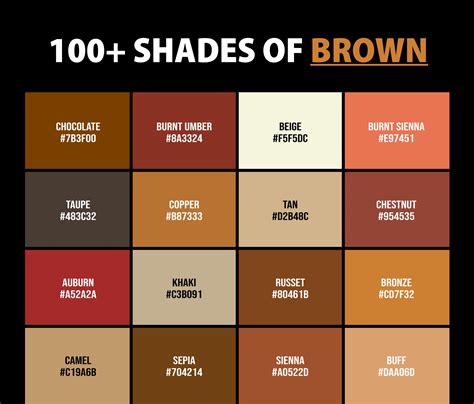Light Brown: The Neutral Hue with Endless Possibilities
Light brown, a versatile and timeless shade, transcends seasons and styles. Its warm and inviting undertones evoke a sense of comfort and stability, making it a popular choice for both interiors and exteriors. With an LRV (Light Reflectance Value) of approximately 50%, light brown falls in the medium range of reflectivity, making it suitable for various lighting conditions.

The Psychology of Light Brown
According to color psychology, light brown represents:
- Stability: It conveys a sense of rootedness and reliability, fostering a feeling of security and comfort.
- Warmth: Its warm undertones create an inviting and cozy atmosphere, promoting relaxation and well-being.
- Neutrality: As a neutral shade, light brown blends seamlessly with other colors, allowing for easy coordination and versatility.
Applications of Light Brown
The versatility of light brown extends to a wide range of applications, including:
- Interior Design: Light brown furniture, walls, and flooring create a warm and inviting ambiance in living rooms, bedrooms, and offices.
- Fashion: Light brown clothing and accessories convey a timeless elegance and sophistication, suitable for both casual and formal occasions.
- Food and Beverage: Light brown shades are often associated with coffee, chocolate, and caramel, evoking a sense of warmth and comfort.
- Nature: Light brown is a common color found in tree trunks, soil, and sand, representing the earthy and natural aspects of the environment.
Shades of Light Brown
Light brown encompasses a wide spectrum of hues, from soft beige to deep tan. Some popular shades include:
- Beige: A light and creamy shade, beige is often used as a neutral backdrop in interior design.
- Wheat: A warm and inviting shade reminiscent of golden wheat fields.
- Tan: A slightly darker shade with a hint of yellow, tan evokes a sense of warmth and sunlight.
- Taupe: A greyish-brown shade that adds depth and sophistication to interiors.
Design Inspiration
To incorporate light brown into your designs, consider these creative ideas:
- Contrast: Create visual interest by pairing light brown with contrasting colors, such as white, black, or navy blue.
- Texture: Add texture to light brown surfaces with textiles, wood, or natural stone.
- Pattern: Incorporate light brown into patterns, such as stripes, plaids, or florals, to add depth and dimension.
- Lighting: Enhance the warmth of light brown by pairing it with warm lighting, such as incandescent or halogen bulbs.
Table 1: Light Brown Color Codes
| Color Code | Color Name |
|---|---|
| #F5F5DC | Beige |
| #D2B48C | Wheat |
| #D2B48C | Tan |
| #8B8680 | Taupe |
Table 2: Light Brown in Nature
| Natural Element | Light Brown Hue |
|---|---|
| Tree Trunk | Bark |
| Soil | Topsoil |
| Sand | Sahara Sand |
| Coffee Bean | Roasted Arabica |
Table 3: Applications of Light Brown in Interiors
| Room | Light Brown Element |
|---|---|
| Living Room | Sofa |
| Bedroom | Curtains |
| Office | Desk |
| Kitchen | Cabinets |
Table 4: Light Brown in Fashion
| Clothing Item | Light Brown Hue |
|---|---|
| Suit | Tan |
| Dress | Beige |
| Shoes | Chocolate Brown |
| Accessories | Taupe |
Customer Insights
Understanding customer motivations and pain points is crucial when incorporating light brown into designs. Consider the following key questions:
- What emotions do customers associate with light brown?
- How does light brown enhance the functionality and aesthetics of your products or services?
- What are the challenges or barriers to using light brown in specific applications?
Conclusion
Light brown is a versatile and inviting shade that adds warmth, stability, and neutrality to various applications. Its wide range of hues and endless possibilities make it a timeless choice for interiors, fashion, and more. By understanding the psychology of light brown and incorporating customer insights into your designs, you can create spaces and products that evoke a sense of comfort, sophistication, and timeless elegance.
